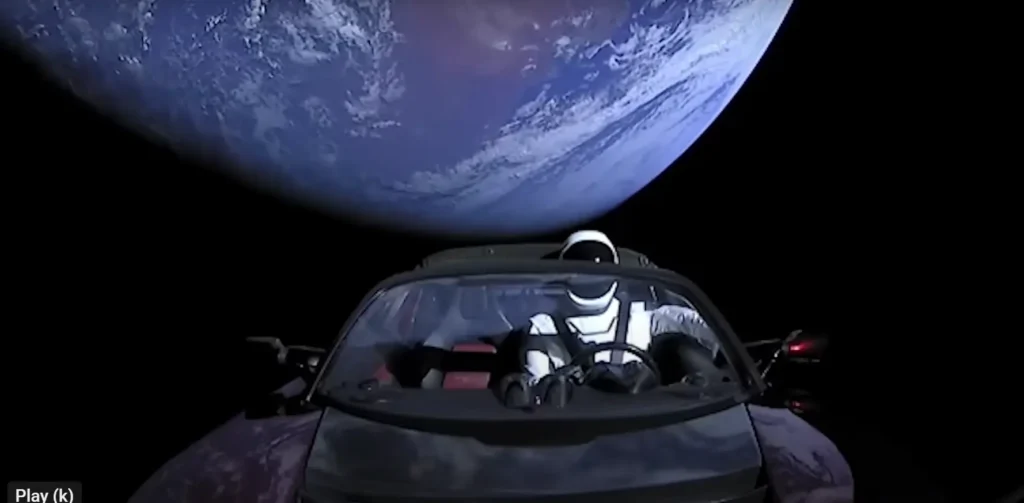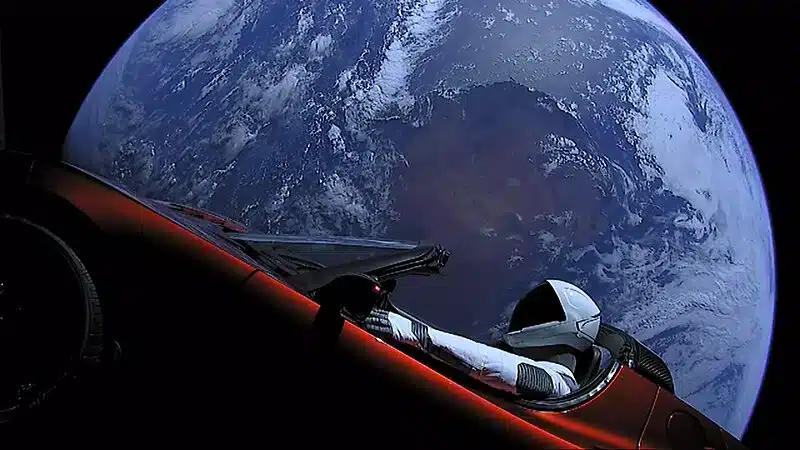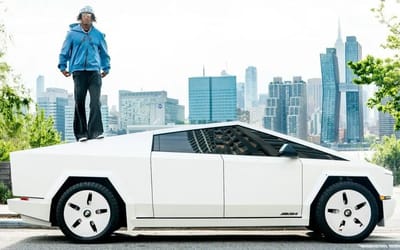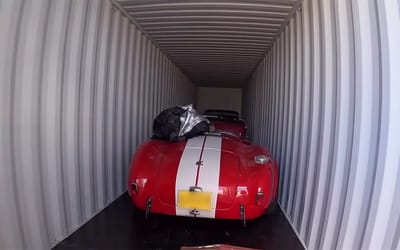The probability the Tesla Elon Musk launched into space will hit Earth
- Elon Musk launched the Tesla into space in 2018
- It has since travelled a distance the equivalent of circling the sun four times
- Scientists have estimated how likely a collision with Earth is
Published on Jun 27, 2024 at 11:08 PM (UTC+4)
by Ben Thompson
Last updated on Jun 27, 2024 at 11:08 PM (UTC+4)
Edited by
Tom Wood
Whether or not a Tesla will land on Earth isn’t something we’d usually be thinking about.
But after Elon Musk launched one into space in 2018, it’s something we’re apparently contemplating.
Cast your mind back six years ago, and you will recall the Roadster.
READ MORE: Elon Musk says we’ll have 20 billion humanoid robots ‘soon’
An Extra-Tesla-rial Encounter?
Since being launched into space on a rocket, the Tesla has traveled approximately 15,715 miles per hour.
It has covered a distance that would be the equivalent of orbiting the sun four times over.
But now that it’s out in space, is there any risk of it falling back to Earth?
Fortunately, some scientists have already looked into this very question.

In a 2018 study published in the journal Aerospace, some researchers likened the Roadster to an Asteroid.
“The Roadster bears many similarities to Near-Earth Asteroids (NEAs), which diffuse through the inner Solar System chaotically through (i) repeated close encounters with the terrestrial planets, and (ii) the effects of mean-motion and secular resonances.
“Initially, NEAs reach their orbits from the more distant main belt via strong resonances (such as the secular 𝜈6 resonance or the strong 3:1 mean-motion resonance with Jupiter).
“When entering these escape routes, many NEAs are driven onto nearly-radial orbits that plunge into the Sun.”
This would put a NEA’s chances of colliding with a planet very low, at around 2 percent.

The Roadster is slightly different.
The article continued: “The initial Tesla orbit grazes that of the Earth, so one might expect an initial period with enhanced collision probabilities with the Earth before it is randomized onto a more NEA-like trajectory.
“It is therefore unclear whether the Tesla is likely to diffuse to distant, strong resonances and meet the same fate as the wider NEA population, or whether it would first strike one of the terrestrial planets.”
The researchers estimated that the Tesla would draw closest to Earth in 2047 when it will come within 3.1 million miles of us.
After 100 years, it becomes ‘impossible’ to make long-term predictions.
But that didn’t stop the team from producing this stat: “However, using an ensemble of several hundred realizations, we were able to statistically determine the probability of the Tesla colliding with the Solar system planets on astronomical timescales.”
With this longer timescale in mind, they estimated that there was a 22 percent chance of the Tesla hitting Earth.
Given that this is on a timescale of millions of years, it probably wouldn’t be best to lose any sleep over a Tesla landing on top of you.
DISCOVER SBX CARS: The global premium car auction platform powered by Supercar Blondie





